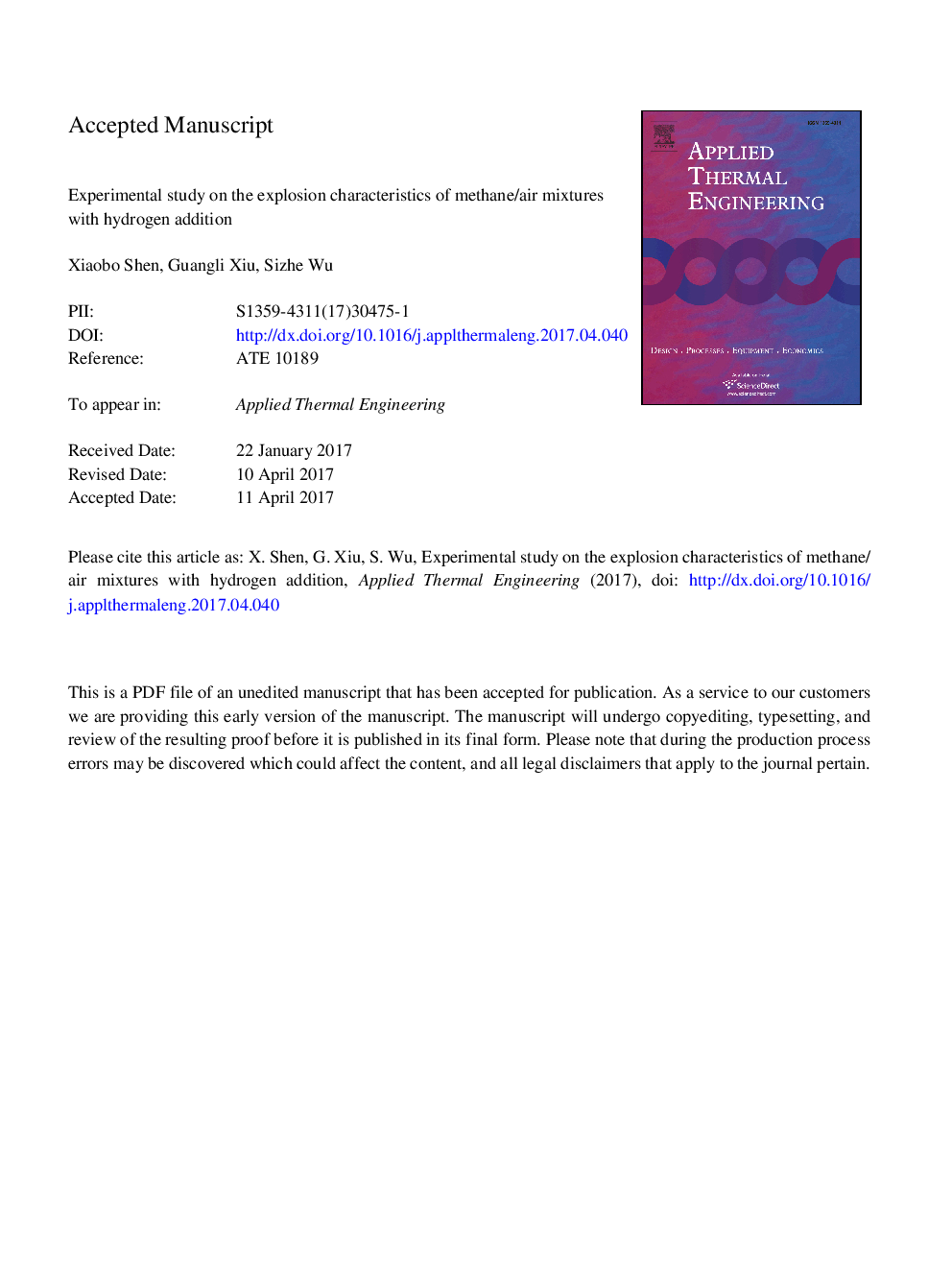| Article ID | Journal | Published Year | Pages | File Type |
|---|---|---|---|---|
| 4991048 | Applied Thermal Engineering | 2017 | 31 Pages |
Abstract
Experiments were performed to measure the explosion parameters of methane-hydrogen/air mixtures in a standard 20-L spherical vessel by pressure sensor. Data were carefully analyzed and compared to systematically evaluate the effect of hydrogen addition. When the hydrogen content is less than 30%, the curve peaks of maximum explosion pressures versus methane content are very close to each other, which is a combined manifestation of equivalence ratio and flame expansion effects. Nevertheless, the peaks of maximum pressure rise rates versus methane content grow up remarkably due to the increment of thermal conductivity and laminar flame speed with increasing hydrogen content. Besides, with hydrogen addition, both lower and upper flammability limits of methane in the mixture decline prominently. The laminar flame speed varies similarly to maximum pressure rise rate and it is predominantly controlled by the total equivalence ratio of the binary fuel blend in air. Overall, the hydrogen addition could significantly enhance the explosion risk and severity of the fuel blend system.
Related Topics
Physical Sciences and Engineering
Chemical Engineering
Fluid Flow and Transfer Processes
Authors
Xiaobo Shen, Guangli Xiu, Sizhe Wu,
